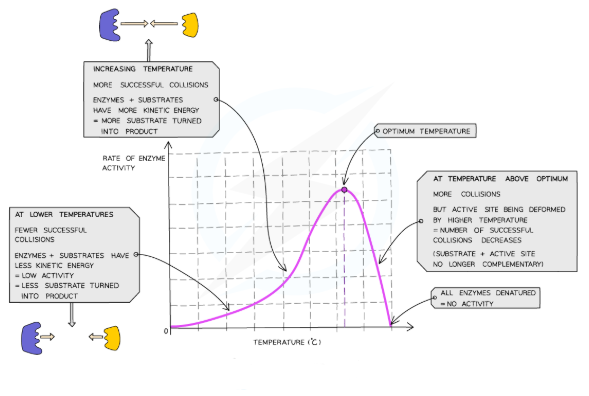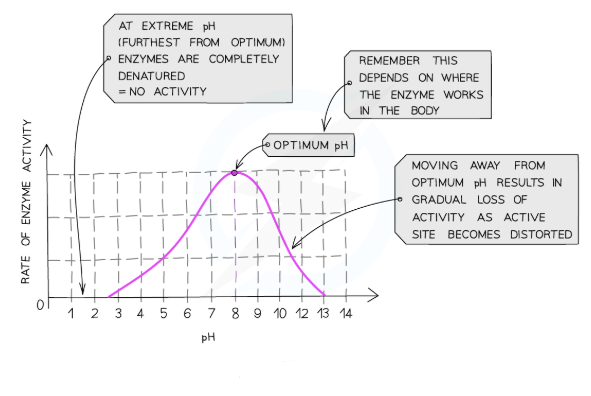Factors affecting enzymes
1/6
Earn XP
Description and Tags
Name | Mastery | Learn | Test | Matching | Spaced |
|---|
No study sessions yet.
7 Terms
Enzymes need the…
right conditions in order to work properly
Enzymes need the right temperature to work
Changing the temperature changes the rate of an enzyme-catalysed reaction
A higher temperature increases the rate at first
But if it gets too hot, some of the bonds holding the enzyme together break, this changes the shape of the enzyme’s active site, so the substrate won’t fit any more
The enzyme is said to denatured (irreversible damage)
All enzymes have an optimum temperature - they work best at

Enzymes need the right pH to work
If its too high or too low, the pH interferes with the bonds holding the enzyme together
This changes the shape of the active site and denatures the enzyme
All enzymes have an optimum pH that they work best at. It’s often neutral pH 7, but not always e.g. pepsin which breaks down pepsin in the stomach, works best at pH 2, meaning its well-suited to the acidic conditions there

Enzymes need the right substrate concentration (the amount of substrate present that can be turned into product) to work
The higher the substrate concentration, the faster the reaction - it’s more likely that the enzyme will meet up and react with a substrate molecule
This is only true up to a point though. After that, there are so many substrate molecules, that the enzymes have as much as they can cope with (all the active sites are full), therefore, adding more makes no difference
Most enzymes catalyse just…
one reaction.
The optimum temperature for most human enzymes is…
around normal body temperature
Stomach enzymes work best at a…
low pH, but the enzymes in your small intestine like a higher pH